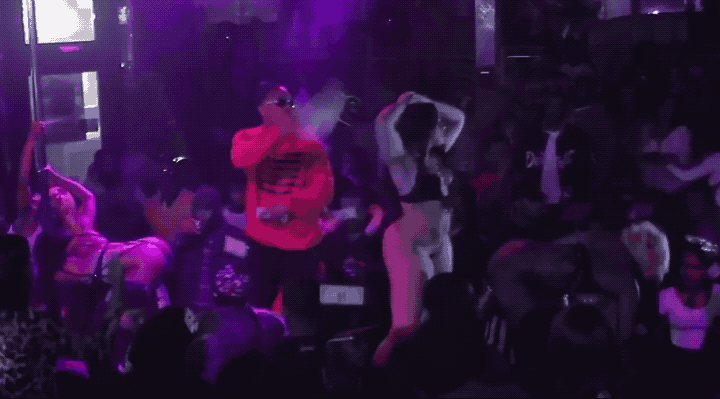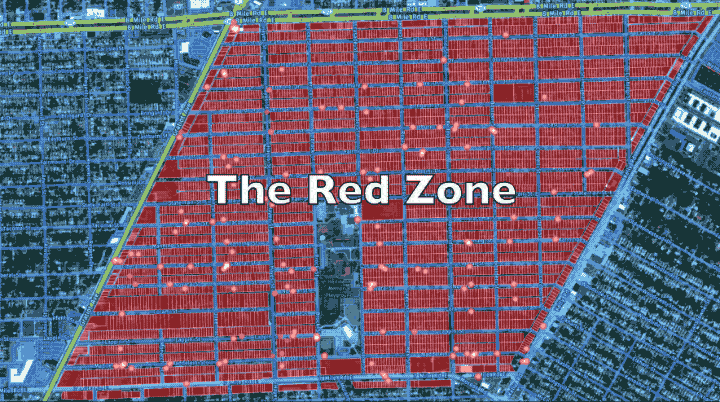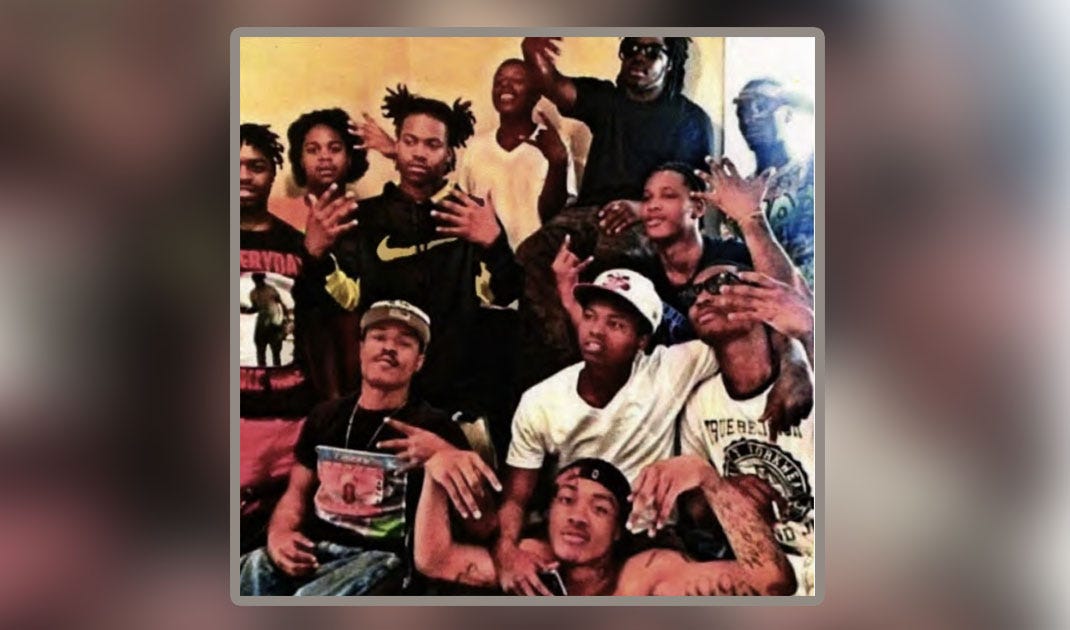
Editor's note: Detroit News reporter Robert Snell spent more than a year investigating Detroit’s gang wars and the Justice Department’s attempts to topple the Seven Mile Bloods. This is the first of eight chaptersin the "Death by Instagram" series.
Federal prosecutors are piecing together a rare death penalty prosecution against members of the Seven Mile Bloods, a notorious east-side Detroit gang blamed for terrorizingneighbors, fueling the opioid epidemic and assassinatingrivals targeted on Instagram hit lists.
The indictment of 21 alleged members and associates marks a crackdown on the close-knit Seven Mile Bloods, or SMB, which prosecutors hope to dismantle by using their own rap videos and social media against them.
The charges, however, have not ended the violence. Three recent homicides and the shooting of rapper Phillip Peaks, aka "Team Eastside Peezy,” suggest the years-long FBI investigation has not quelled an ongoingwar among east-side gangs.
The violence threatens to unravel progress reducing murders on the east side of Detroit, particularly on turf controlled by what prosecutors consider the strongest gang in one of the deadliest parts of America’s most violent big city.

Accused Seven Mile Bloods members, from left to right,Corey Bailey, Quincy Graham, BillyArnoldand Michael Rogers star in the YouTube rap video "Money, Desire, & Regrets." (Video: YouTube)
Since 2003, prosecutors say gang members targeted for death dozens of rivals on Instagram hit lists, participated in more than 14 shootings, at least four homicides, 11 attempted murders and drug crimes that eroded the quality of life on the gang’s home turf, known by locals as The Red Zone.
“The SMB made The Red Zone into a war zone,” U.S. Department of Justice Trial Attorney Julie Finocchiaro said.
More than 1,000pages of federal court records and trial testimony illustrate how prosecutors used Facebook and Instagram posts, YouTube videos and rap lyrics to try and topple a social-media savvy gang that had a death grip on both the opioid drug trade and violence on the east side of Detroit.
Five defendants in the Seven Mile Bloods case face possible death sentences under federal law, even though Michigan has abolished the death penalty. The five face possible death sentences because prosecutors say they were involved in homicides and violence as part of an organized criminal enterprise that operated a pain-pill pipeline between Detroit and Charleston, West Virginia, the epicenter of the nation’s opioid crisis.
The court records and testimony also provide a street-level look at life and death in the The Red Zone. The gang’s turf is in the northeast corner of the 48205 ZIP code between Seven Mile and Eight Mile roads, east of Gratiot and west of Kelly.
The ZIP code is so dangerous some locals call it the 4820-Die.

This animated map shows the location of homicides in the 48205 ZIP code since 2009.
The case presents a clash of eras because federal prosecutors are armed with digital-age evidence and a 1970s crime-fighting tool for busting organized crime: racketeering conspiracy. Seven Mile Bloods members openly discussed their crimes, the government alleges, and left a digital breadcrumb trail of evidence spread across social media.
A mix of arrogance and naiveté leads gangsters to document crimes on social media and is the result of living in a place so poor and violent that a possible death sentence is meaningless, said Carl Taylor, a Michigan State University sociology professor who has studied Detroit’s gang culture.
“The death penalty?” Taylor said, “Some of them are already dead (inside).”
But not quite buried.
There was no gang war and no organized crime, defense lawyers argue. Just a few independent drug dealers, a collection of men from an impoverished neighborhood unfairly lumped together in a flawed case andblamed for violence that was personal, not business.
Racketeering defendants face extreme odds. Only four people had been acquitted of racketeering-related crimes in the last decade in Detroit federal court.
That was beforeMarch 16. That’s when the first four defendants to stand trial in the Seven Mile Bloods case watched the jury forewoman stand and read a verdict.
The Red Zone
The racketeering conspiracy alleged by prosecutors originated in The Red Zone, the gang’s home turf.

The Red Zone on Detroit's east side is between Seven Mile and Eight Mile roads and bordered by Gratiot Avenue on the west and Kelly Road on the east.
The Red Zone is part pharmacy, part killing field and part music studio where gang members peddled drugs, fought rivals and shot rap videos on street corners.
Gang members made money selling crack cocaine, heroin, marijuana, OxyContin pain pills and prescription cough syrup, the main ingredient mixed with Sprite to make the potent drink“Lean," according to the government.
Prosecutors say the racketeering enterprise generated “unexplained wealth” that Seven Mile Bloods members spent on cars, $50,000 diamond-encrusted Breitling watches, $600 belts and at Detroit strip clubs.

Rappers linked to the Seven Mile Bloods shot thisvideoat an area strip club. (Video: YouTube)
There is “no evidence that any ofthese individualshad a job...,” Assistant U.S. Attorney Christopher Graveline said.
The Seven Mile Bloods started engaging in organized crime in 2003 and expanded operations to the entire Red Zone during the next 12 years, according to prosecutors.
The neighborhood became Detroit’s deadliest area in summer 2011 as the gang rose to power.
Other violent crime, including assaults, ravaged The Red Zone during the gang's ascent.

Locations of assaultswithin The Red Zone from 2009 to 2016, according to Detroit Police statistics.
A common symbol of thegang is a five-pointed star, which signifies that the Seven Mile Bloods belong to the “People Nation,” an alliance of street gangs that includes the Bloods, Vice Lords, Latin Kings and Latin Counts.

The Seven Mile Bloods and its affiliated group, Hobsquad, use various gang signs and symbols, including the five-pointed star and a hand displaying all five fingers. The Seven Mile Bloods' approximately 50 members typically wear red clothing, hats and bandanas. (U.S. Attorney's Office)
The Seven Mile Bloods turned several abandoned homes, or"trap houses,"into drug stores within The Red Zone where narcotics were stashed before being sold to customers across Metro Detroit and beyond.
Manning Street, an east-west artery through The Red Zone, is riddled with trap houses, prosecutors say.
This 360° tour ofThe Red Zone starts on Tacoma Street, east of Gratiot Avenue, one of the main streets where prosecutors say the Seven Mile Bloods started engaging in organized crime in 2003.(Video: Tom Gromak/The Detroit News)
Between 2003 and 2011, investigators found Seven Mile Bloods members, drugs, moneyanddrug paraphernaliaat almostone dozen homesalong Manning, according to the indictment.
'Real money'
The gang’s reach extended far beyond Detroit.
In Charleston, the gang concentrated on selling one drug: the opioid OxyContin, a powerful and addictive pain medication, according to the government.

In 2009, members started buying extra pills from Red Zone residents who had prescriptions, prosecutors allege.
The gang paid $15 per pill in Detroit and sold the drug for $60 in Charleston.
“The money really started flowing in,” Graveline said.
Prosecutors say the drug ring generated more than$80,000 a week and trouble down south.More than 100 Detroit residents have been arrested on drug-related charges in Charleston during a 10-year span andone man was killed in 2014on orders from Seven Mile Bloods members, according to court records.
To haul the drugs to West Virginia, the gang used Greyhound buses, rental cars and “stuffers,” neighborhood girls who were paid $1,000 a trip to hide the pills in their genitalia.
Eventually, gang members were transporting thousands of pills each trip and had to lay off the “stuffers.”
“When it’s that much...you just gotta try to hide it and just do the speed limit and hope you don’t get pulled over,” testified Derrick Kennedy, an admitted member of the racketeering conspiracy.
The biggest threat to gang members, however, would followa chance encounter at a Detroit parole office in July 2014.
READ CHAPTER 2 | A deadly rivalry:The Seven Mile Bloods go hunting for rivals after a chance meeting on Detroit’s west side.